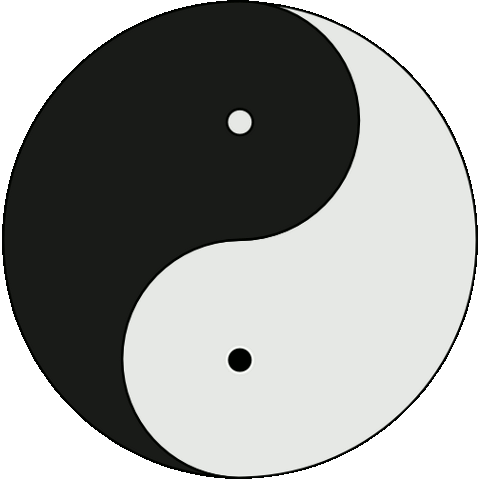Description
Refactoring is the process of restructuring existing computer code -- changing its factoring -- without changing its behavior. You probably knew that. But did you know it's also a meditation technique? Improve your practice of mindful coding with this light overview to the Zen of Refactoring.
Slides
The Zen of Refactoring

Refactoring is the process of restructuring existing computer code -- changing its factors -- without changing its behavior. You probably knew that. But did you know it’s also a meditation technique? Come improve your practice of mindful coding.
After these slides, we’ll start with some actual production code, make sure its unit tests work ok, then collaboratively, consciously contemplate the many forking paths that twine and wind through the Garden of Abstract Delights.
What is refactoring?
- refactoring is a process
refactoring (verb): to restructure software by applying a series of refactorings without changing its observable behavior
- a refactoring is a technique
refactoring (noun): a change made to the internal structure of software to make it easier to understand and cheaper to modify without changing its observable behavior
(definitions by Martin Fowler)
What is Zen?
mostly an excuse for pretty pictures and hippie jokes

disclaimer: This presentation uses some spiritual imagery but is not intended to parody any religion or culture (except American New Age Hippies)
What is Refactoring?
Refactoring is changing code without changing its behavior.
What is Refactoring?
Refactoring is changing code without changing its behavior.
Refactoring is change without change.
What is Refactoring?
Refactoring is changing code without changing its behavior.
Refactoring is change without change.
Refactoring is Zen.
refactoring is NOT
rewriting
rebuilding
porting
upgradging
debugging
Why refactor?

(Yoda ≈ Buddha)
Refactor to understand
clarity calm insight knowledge understanding

See the code for what it is, not what you think it is, or what you want it to be
Refactor to remove duplication
DRY

Refactor to increase code clarity
sometimes clarity requires more duplication
What is code clarity?
Clear code is:
- readable
- modular
- maintainable
- ready for teamwork
- ready for change
rereading and rewriting
“Curiously enough, one cannot read a book; one can only reread it. A good reader, a major reader, an active and creative reader is a rereader.” - Nabokov
- applies to refactoring code too, not just rereading books
- your second solution will usually be better than your first
- code is a communication medium
https://www.goodreads.com/quotes/34497-curiously-enough-one-cannot-read-a-book-one-can-only
"Zen Refactoring"
Let your eyes blur and scroll through the code
See what pops out
- duplication?
- repetition?
- long lines? long methods?
- strange gaps?
- comments?
How?
- Write some tests
- Change the code
- Run the tests
- Move ahead, or move back (revert)
Tests Are Essential
run them before
change them during
tests are an extension of code
What are the qualities of a refactoring?
Reversible

Mechanical

Brief
or at least made of many short, reversible steps
Automated
I choose my text editor based on how well it refactors my code
(Other programmers may have different criteria.)
Refactoring: Rename
The simplest and most powerful
- in VS Code: F2
Refactoring: Extract
Extract Variable, Extract Function, Extract Method
Example: Extract Function
console.log('' + new Date() + ' - error: too many notes')
console.log('' + new Date() + ' - error: not enough cowbell')
=>
function logError(message) {
console.log('' + new Date() + ' - error: ' + message)
}
logError('too many notes')
logError('not enough cowbell')
Refactoring: Inline
"Inline" is the reverse of "Extract"
Introduces duplication to increase clarity
Refactoring: Replace Comment With Name
A medium-length comment can often be replaced with a variable / function / method / class whose name is the comment
"A comment is a lie waiting to happen." - Alex
Example: Replace Comment With Name
// 11 days at 24 hours per day times 60 minutes per hour
let duration = 11 * 24 * 60
=>
let hoursPerDay = 24
let minutesPerHour = 60
let durationInMinutes = 11 * hoursPerDay * minutesPerHour
Refactoring: Introduce Parameter
- to take literals and make them variables, so the function is more useful
- to remove global variables -- pass them in as parameters instead
- good followup to "extract method"
- good when used with default parameters (ES2015)
function logError(message, severity = 'error') {
console.log('' + new Date() + ' - ' + severity + ': ' + message)
}
logError('too many notes')
logError('volume too low', 'warning')
Refactoring: Extract Object (Struct)
- objects are great for keeping related data together
- also good for keeping your code readable, since fields are named by the caller, not just the receiver
Example: Extract Object (Struct)
function distanceBetween(x1, y1, x2, y2) {
let deltaX = x2 - x1;
let deltaY = y2 - y1;
return Math.sqrt(deltaX * deltaX + deltaY * deltaY)
}
let distance = distanceBetween(41.12, -72.22, 42.18, -72.34)
=>
function distanceBetween(point1, point2) {
let deltaX = point2.x - point1.x;
let deltaY = point2.y - point1.y;
return Math.sqrt(deltaX * deltaX + deltaY * deltaY)
}
let distance = distanceBetween( { x: 41.12, y: -72.22 },
{ x: 42.18, y: -72.34 })
This type of object -- with fields but no methods -- is sometimes called a
struct.
Refactoring: Extract Class
- a class is for sharing methods between all related object instances
class Point {
distanceFrom(otherPoint) {
let deltaLat = otherPoint.x - this.x;
let deltaLon = otherPoint.y - this.y;
return Math.sqrt(deltaLat * deltaLat + deltaLon * deltaLon)
}
}
let point1 = new Point();
point1.x = 41.12
point1.y = -72.22
let point2 = new Point();
point2.x = 42.18
point2.y = -72.34
let distance = point1.distanceFrom(point2)
Refactoring: Introduce Constructor
- a constructor is used to initialize your object
- helps ensure that all the instance data is in a valid state
- streamlines your initialization code
class Point {
constructor(x, y) {
this.x = x;
this.y = y;
}
//...
}
let point1 = new Point(41.12, -72.22)
let point2 = new Point(42.18, -72.34)
let distance = point1.distanceFrom(point2)
Code Smells
a "code smell" means "something might be wrong here"
- Long Method
- Long Line
- Nested
ifs - Duplicated code
- can be cured by Extract Method and Introduce Parameter
-
Feature Envy
- when a method accesses the data of another object more than its own
- can be cured by Refactoring: Move Method
more at Code Smells
Some Guidelines
- Short Lines
- Short Methods
- Meaningful Names
- Fewer Dots-in-a-row
- (but see next slide)
Dots In A Row
don't confuse method chaining (often good) with feature envy (usually bad))
Method Chaining
string.split(' ').map((s)=>s.toUpperCase()).join(' ')
Feature Envy
course.students[0].phone.sendText('hi')
| style | dots | collaborators |
|---|---|---|
| method chaining | 4 | 2 (String, Array) |
| feature envy | 3 | 5 (Course, Array, Student, Phone, String) |
The Book

https://martinfowler.com/books/refactoring.html
...coming soon in JavaScript!
References
Outline
- The Zen of Refactoring
- What is refactoring?
- What is Zen?
- What is Refactoring?
- What is Refactoring?
- What is Refactoring?
- refactoring is NOT
- Why refactor?
- Refactor to understand
- Refactor to remove duplication
- Refactor to increase code clarity
- What is code clarity?
- rereading and rewriting
- "Zen Refactoring"
- How?
- Tests Are Essential
- What are the qualities of a refactoring?
- Reversible
- Mechanical
- Brief
- Automated
- Refactoring: Rename
- Refactoring: Extract
- Example: Extract Function
- Refactoring: Inline
- Refactoring: Replace Comment With Name
- Example: Replace Comment With Name
- Refactoring: Introduce Parameter
- Refactoring: Extract Object (Struct)
- Example: Extract Object (Struct)
- Refactoring: Extract Class
- Refactoring: Introduce Constructor
- Code Smells
- Some Guidelines
- Dots In A Row
- The Book
- References
